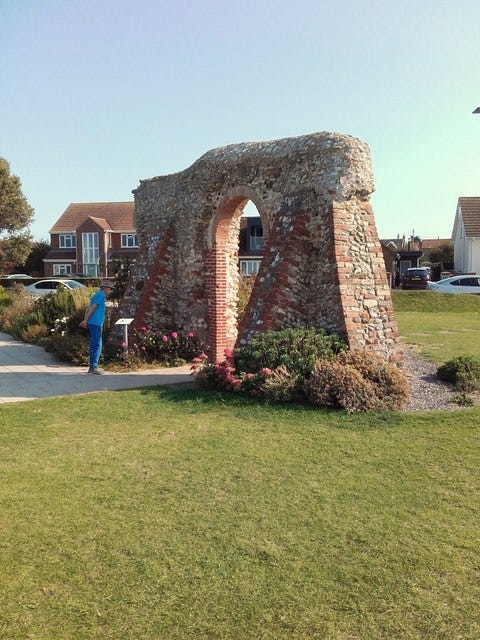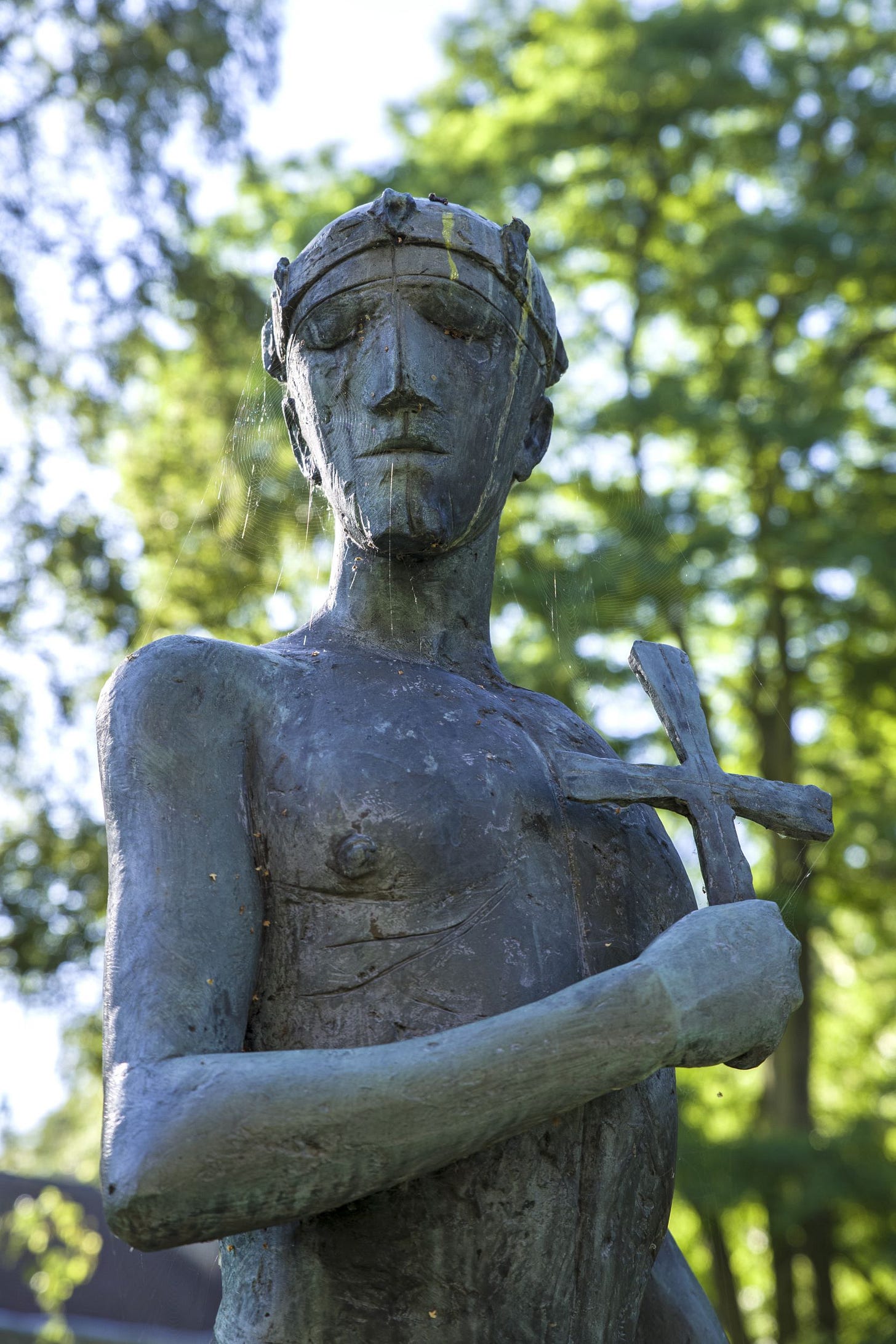A familiar view. Hunstanton Lighthouse framed by the remains of St Edmunds Chapel (Shutterstock)
Few visitors to Hunstanton can resist the urge to take a photograph of Hunstanton’s fine nineteenth century lighthouse using the surviving arch of what is left of St Edmunds Chapel to frame it as it stands, resolute and stern against all too frequently angry skies.
And why not?
It’s an all too rare to capture two famous landmarks in one shot, the old and the (relatively) new. Two coastal havens, one with the intent of bringing the faithful to God, the other with a slightly different brief of keeping them out of his reach for a little bit longer if at all possible.
St Edmund, aka Edmund of East Anglia or Edmund the Martyr is said to have been the King of East Anglia from about 855 (and that’s AD not AM, this was a very long time ago, so details are a little patchy) until his death in 869. Norfolk can lay claim to him being one of its own (Boudicca, Edmund and Lord Nelson, not a bad trio to have by your side if needed), the son of a slightly more obscure local King by the name of Æthelweard who Edmund succeeded when he was just 14 years old.
Contemporary accounts indicate that he was the proverbial wise and gentle monarch who cared greatly for his people and was suitably God fearing. This belief that flew in the face of the invading Vikings at this time who, enraged at both Edmund’s tendency to lead his armies into battle against them as well as his steadfast refusal to renounce Christ, beheaded him on the orders of (and this is where the whole thing starts to sound like an episode of Game Of Thrones) one Ivar the Boneless, a notorious Viking bully who wasn’t up to anything very much unless he could call upon the company and support of Ubba, his equally unpleasant brother.
History stood stark amongst the dull and squat (Alex McGregor/geograph)
I can’t help but admire Edmund. He stood up for what he believed in, led from the front and was, by all accounts, a popular and respected King. And let’s face it, British history is littered with quite a few dreadful ones who were everything that Edmund was not. Recognition of his courage and devotion to God led, eventually (Norfolk people won’t be hurried into anything) to the Chapel atop the cliffs at Hunstanton to be built and dedicated to him in 1272 with the impressive arch-cum-frame still standing today along with the remains of some of the Chapels walls.
A contemporary statue of Saint Edmund in, appropriately, the churchyard at Saint Edmundsbury Cathedral in Bury St Edmunds (Shutterstock)
A far worthier candidate to be the Patron Saint of England than the current one perhaps? I think so.
St Edmunds day, anyone?
Major excavations were carried out on the Hunstanton site in 1913. This saw many ancient artefacts recovered including fragments of 15th century window glass as well as glazed floor tiles from the 15th and 16th centuries, these discoveries indicating that the Chapel was a busy and well maintained building for at least two centuries after its initial construction and, in all probability, for some considerable time after that.
Hunstanton is rightly proud of its connection with St Edmund. As well as the Chapel, the town has two streets and two Churches that are named after him whilst some people live in hope that, one day, the town will revert back to its original and rather beautiful name of Hunstanton St Edmunds.
I’d be the first to concur with that.






